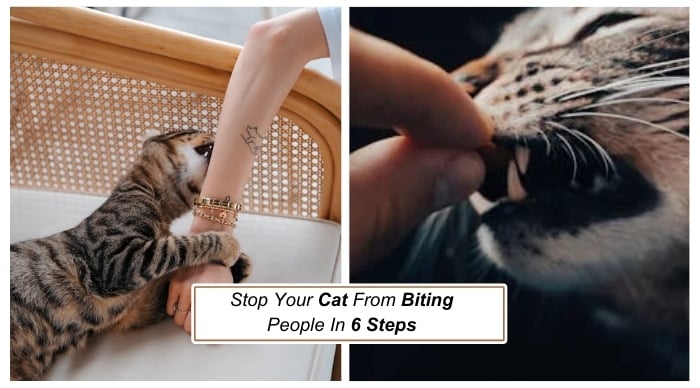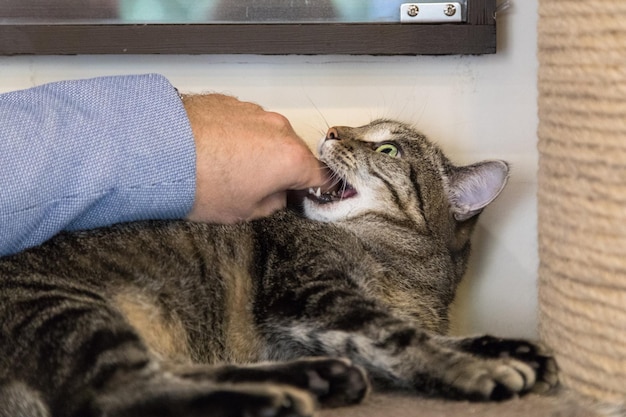Stop Your Cat From Biting People In 6 Steps

It is quite a joy to have a cat around; however, what do you do if that beautiful furry friend of yours starts biting? From a cute nip to a nasty assault, a bite can be baffling and frustrating for cat parents.
Of course, you might be wondering, Why does my cat suddenly nip me? or “Why does my cat bite me, and how to stop it?” —You’re not alone! In this article, we will highlight the reasons why your cat bites, what this means, and how to stop your cat from biting with six simple steps.
Why Do Cats Bite?
Cats communicate in ways we don’t always understand. A bite could mean anything from playful affection to overstimulation or even fear.
Here are some common reasons your cat might bite:
- Petting Aggression: Your cat may love petting, but there’s a limit. Overstimulation can cause some cats to lash out suddenly.
- Playfulness: Kittens, in particular, often bite as part of play. They see your hands as toys and don’t know better.
- Fear or Stress: If your cat feels threatened or cornered, biting might be a defensive reaction.
- Territorial Behavior: Cats can become possessive of their space, leading to unprovoked “attacks.”
- Gentle Bites (Love Bites): Sometimes, cats gently bite as a quirky way of showing affection—though it can still hurt!
Understanding the reason behind the behavior is the first step toward resolving it.
6 Steps to Stop Your Cat From Biting People – Useful Tips
Here are six effective strategies to stop your cat from biting, no matter the reason:
1. Recognize Early Warning Signs
Pay attention to your cat’s body language during interactions. Watch for signs like:
- Tail twitching or lashing.
- Flattened ears.
- Dilated pupils.
- Sudden tenseness in their body.
These are cues that your cat is reaching their limit and may bite if the behavior continues.
2. Avoid Overstimulation
Many cats experience petting aggression, especially if stroked for too long or in areas they dislike. Follow these tips:
- Focus on petting areas your cat enjoys, such as the head or chin.
- Avoid sensitive spots like the belly unless you know your cat loves it.
- Keep petting sessions short and sweet to avoid overwhelming your cat.
3. Redirect Playful Biting
If your cat bites while playing, they might see your hands as a toy. Here’s how to fix this:
- Use interactive toys like feather wands or laser pointers to channel their energy.
- Avoid roughhousing with your hands, as this encourages biting behavior.
- Provide plenty of toys, such as balls or plush mice, to keep them entertained.
4. Set Boundaries Consistently
Your cat needs to understand that biting is not acceptable. Use these strategies:
- Say a firm “No!” or “Ouch!” when your cat bites, then withdraw attention.
- Avoid yelling or physical punishment—it can increase fear and aggression.
- If biting persists, calmly leave the room to show your cat that biting ends the fun.
5. Provide a Stress-Free Environment
Unprovoked biting could stem from fear or anxiety. To help your cat feel secure:
- Create safe spaces where they can retreat when overwhelmed.
- Keep their routine consistent with regular feeding and playtimes.
- Use calming aids, like pheromone diffusers, to reduce stress.
6. Train Using Positive Reinforcement
Reward good behavior to encourage your cat to act appropriately:
- Give treats and praise when your cat plays gently or allows petting without biting.
- Avoid rewarding biting, even unintentionally (e.g., pulling your hand away in a way that seems playful).
- Be patient — training takes time, especially with older cats.







